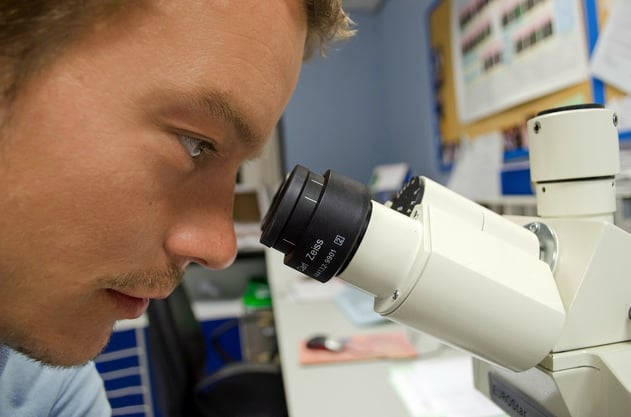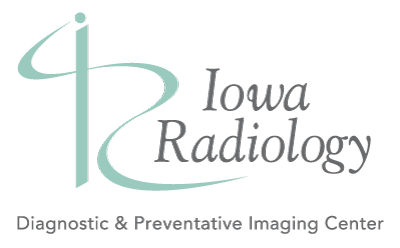
May is National Cancer Research Month, a time designated for recognizing the importance of all who contribute to the fight against cancer. Decades of research have led to dramatic advances in the detection and treatment of many different types of cancer. There are now more than 18 million cancer survivors in the U.S.—more than at any other time in history. In 2022, 69% of those survivors had lived at least 5 years after diagnosis; 47% have lived at least 10 years, and 18% have lived 20 years or more following a cancer diagnosis. That is tremendous progress, considering that between 1975 and 1977, more than half of cancer patients died within five years.
However, the fight is far from won. Cancer continues to be a leading cause of death in the U.S., second only to heart disease, and is the most frequent cause of death among people younger than 85. In 2024, experts expect to see more than two million new cancer cases and more than 600,000 cancer deaths across the nation. Disturbingly, deaths from uterine cancer have been on the rise, and experts observe persistent and significant disparities in survival rates of Black and White patients.
Steadfast dedication to research is essential to our ability to continue to make progress against this deadly disease. Here are just a few of the major milestones that cancer research has made possible.
1884
Baltimore surgeon William Halsted introduced radical mastectomy as a new treatment for breast cancer. Prior to this innovation, breast cancer was nearly always fatal.
1903
Shortly after Marie Curie’s discovery of radium, doctors used it to successfully treat patients with skin cancer.
1937
President Franklin D. Roosevelt signed legislation establishing the National Cancer Institute, providing a steady source of federal funding for cancer research.
1943
The Pap test made early cervical cancer detection possible, allowing doctors to treat cancers and precancerous conditions before they worsen and spread. Since the 1950s, widespread use of the test in the U.S. has contributed to a nearly 70% reduction in cervical cancer deaths.
1947
The first partial remission of pediatric leukemia was achieved using the drug aminopterin, paving the way for later cures. Prior to this time, children suffering from acute leukemia typically died within weeks of diagnosis.
1949
The first cancer chemotherapy drug was approved by the FDA for treatment of Hodgkin lymphoma.
1955
The National Cancer Institute established the Clinical Trials Cooperative Group, a nationwide network for cancer research.
1958
Combination chemotherapy was shown to cause remission in children and adults with acute leukemia, setting the stage for modern chemotherapy.
1950s–60s
Research showed a link between tobacco smoking and cancer. Smoking became established as a major cause of lung and other cancers, giving rise to smoking cessation initiatives aimed at decreasing the rate of lung cancer worldwide.
1965
The overall cure rate for leukemia reached 15%, up from 4% in 1962.
1960s–70s
Flexible sigmoidoscopy and colonoscopy advanced colorectal cancer screening, enabling better detection of early cancers and precancerous polyps. Increasing use of routine screening contributed to a reduction in colorectal cancer mortality of more than 40% over the next four decades.
1970–71
President Nixon announced a national War on Cancer in his State of the Union address and signed the National Cancer Act, providing unprecedented funding levels for the National Cancer Institute and dramatically expanding research.
1971
Total mastectomy was shown to be an effective alternative to radical surgery for early stage breast cancer, reducing pain and speeding recovery for patients.
1974
The first clinical CT scan was performed on a patient with a suspected brain tumor, allowing doctors to clearly image a tumor in the brain’s soft tissue for the first time.
Leukemia cure rate reached 25%.
1977
A new drug combination was shown to cure 70% of patients with advanced testicular cancer, leading to a modern overall cure rate of 95%.
Lumpectomy followed by radiation was shown to be as effective as mastectomy for early stage breast cancers, allowing many patients to enjoy quicker recovery and fewer side effects from treatment.
Late 1970s
Regular mammography screening became increasingly common. By 2008, the screening rate approached 70%, contributing to a 27% reduction in breast cancer mortality in the U.S. since 1975.
1988
Researchers found that chemotherapy following surgery reduces the risk of colorectal cancer recurrence by 40%.
1989
Leukemia cure rate reached 50%.
Early 1990s
Cancer mortality rates began to decline for the first time since records have been kept. The rate fell by 2.6% between 1991 and 1995; by 2008, it had fallen by 18%.
1998–2003
A series of large, annual budget increases for the National Institutes of Health (NIH) doubled the agency's biomedical research efforts over the next five years, accelerating the pace of cancer research.
2000
The Iowa Radon Lung Cancer Study linked radon exposure to increased risk of lung cancer. The finding leads to radon inspections becoming a routine part of homeownership.
2003
A large study links obesity to cancer, estimating that obesity could be a cause of up to 20% of cancer deaths.
2006
The Cancer Genome Atlas project is launched, bringing together researchers across multiple disciplines and institutions. The project’s aim is to provide insight into the genetic pathways involved in the development of three common cancers in hopes of identifying new treatments.
2012
Overall leukemia cure rate reached 90%.
2016
New drug treatments improved survival among patients with non-small cell lung cancer.
A federally funded study found that 15-year survival rates of childhood cancer patients doubled between the 1970s and 1990s.
2018
A new anti-cancer drug significantly increased survival rates among young people with T-cell acute lymphoblastic leukemia.
A new class of drugs dramatically improved survival among women with BRCA-mutated ovarian cancer.
2019
A new combination drug therapy dramatically increased survival rates among younger women with certain types of breast cancer.
As you can see, we’ve come a very long way as a result of cancer research. Only through relentless dedication to this field of study will we be able to continue the progress that we’ve enjoyed during our lifetimes. The American Cancer Society Cancer Action Network (ACS CAN) is dedicated to influencing policy nationwide to fund cancer research, support patients, broaden access to care, and spread the word about prevention. Learn about how ACS CAN is working to advance cancer research here.
Iowa Radiology strives to be a valued information resource as well as a provider of cutting-edge care. Click the link below to view our infographics about the benefits of 3D mammography and abbreviated breast MRI for early breast cancer detection.
Resources
American Association of Cancer Research. Cancer Research Saves Lives. YouTube. Published April 24, 2013. Accessed March 1, 2024. https://www.youtube.com/watch?v=M99Xeyvtdf4.
American Society of Clinical Oncology. Cancer Progress Timeline. ASCO.org. Published November 25, 2023. Accessed March 1, 2024. https://society.asco.org/news-initiatives/cancer-progress-timeline.
Field RW, Lynch CF, Smith BJ, et al. Residential Radon and Lung Cancer Case-Control Study. University of Iowa Center for Health Effects of Environmental Contamination. Published May 25, 2000. Accessed March 1, 2024. https://cheec.uiowa.edu/research/residential-radon-and-lung-cancer-case-control-study.
National Cancer Institute. National Cancer Act of 1971. Published December 23, 1971. Updated February 2, 2021. Accessed March 1, 2024. https://www.cancer.gov/about-nci/overview/history/national-cancer-act-1971.
National Cancer Institute Office of Cancer Survivorship. Statistics and Graphs. Cancer.gov. Updated February 29, 2024. Accessed March 1, 2024. https://cancercontrol.cancer.gov/ocs/statistics.
Siegel RL, Giaquinto AN, Jemal A. Cancer Statistics, 2024. CA Cancer J Clin. 2024;74(1):12–49. https://dx.doi.org/10.3322/caac.21820.


